We can't find the internet
Attempting to reconnect
Something went wrong!
Hang in there while we get back on track
Master Series Paint Contest
An Exhibition and Painting Contest For Miniature Figurines and Models
The Master Series Open was established in 2009 when Reaper Miniatures desired to expand their annual ReaperCon painting contest to include entries composed of new subjects and products made by all manufacturers around the world. It was at this time that Reaper Miniatures also decided to adopt the 'Open System' format and the International Judging Criteria, both developed by the Military Miniature Society of Illinois for their prestigious Chicago show.
The Open System is designed to recognize and reward modelers of all skill levels and is based on the conceptual goal that no deserving work should go home unrewarded. Supporting this concept is the guiding belief that anything done to further this goal is a good idea, and anything that impedes it is a bad one.
Armed with just this simple goal and these few words Reaper Miniatures drastically changed their existing show format to wholeheartedly embrace the Open System and the International Judging Criteria. The changes proved to be an instant success and the Master Series Open has grown dramatically in entries each year.
The Master Series Open Awards Ceremony for 2026 will be Saturday at 8PM in the Artists/Open Area.
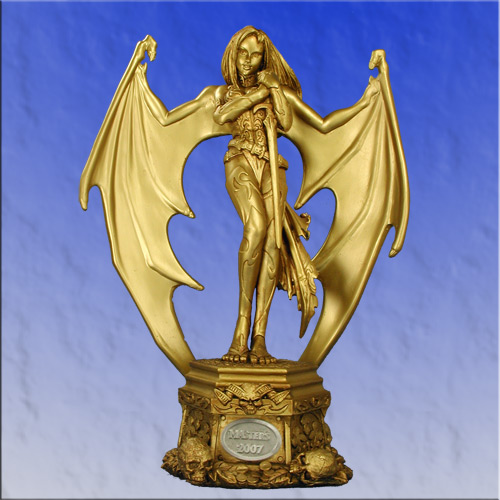
Open System Basics
The Open System reduces the quantity of categories normally found in most painting competitions. Gone are familiar categories such as Best Unit or best Large Scale Model. Rather than focus on the types of subject matter being presented the Open System focuses on the type of modeling work being performed.
The categories are:
Painters Division
The Painters Division includes figure models where the exhibitor understands that only the painting aspects of the entry are judged. Regardless of any added basing, an entry that is single figure model that is unmodified or stock belongs in this division. Scratch built and converted figures are not excluded from this division but they are judged as if they were a painted stock commercial casting. Entries in this division are judged for Difficulty, Workmanship, Painting Skill and Presentation with the primary focus on the Painting Skill.
Here’s a breakdown of the criteria and the % amounts the judges consider when judging a piece in the Painters Division. The judges use these percentages as a guide to base their final determination on the placing of the piece.
| Difficulty: | 5% |
| Creativity: | 10% |
| Workmanship: | 10% |
| Painting Skill: | 70% |
| Presentation: | 5% |
Open Division
The Open Division includes converted and fully original entries where the exhibitor understands that all aspects of the entry are judged.
Physical and digital methods of conversion and sculpting are allowed. Physical methods include combining parts from multiple stock models (weapon swaps, limb swaps, head swaps, and other “kitbashing”), as well as original sculpting in putty, clay, wire, and other media. Digital methods include creating and modifying virtual objects in programs such as (but not limited to) Zbrush, Nomad, Blender, and CAD 3D.
Besides conversion and sculpting on models, conversion and sculpting of basing are also allowed and encouraged.
Exhibitors are encouraged to show photographs and/or screen-captures of their Work-in-Progress (WIP), such as the converted or sculpted model before painting, in order to clearly show their effort and contribute to the Difficulty, Workmanship, and Presentation criteria (see below).
When submitting a conversion, the exhibitor must identify the original model or parts by name, manufacturer, and/or image, to help the judges evaluate the extent and skill of the conversion.
An unmodified or stock model, without original converted or sculpted basing, is not eligible for the Open Division unless the exhibitor was also the sculptor of the original model.
A 3D-printed model or basing element must be fully created by the exhibitor to qualify as fully original work. Digital sculptures generated by online character-design applications (such as HeroForge), by scanning devices, or by artificial-intelligence (AI) programs – in general, by any automated process not involving active crafting and risk by the exhibitor – do not qualify as fully original or converted work, but rather as stock models.
Whereas the Painters Division is predominantly judged on Painting Skill, entries in the Open Division are judged more evenly for Difficulty, Creativity, Workmanship, Painting Skill, and Presentation. So in order to reach a maximum score, many more criteria need to be addressed. For example, although a piece where the sword had been swapped and/or a small set of stairs has been sculpted does qualify for the Open Division, it would not score as high on the Difficulty, Creativity, and Workmanship categories as a piece where part of the body was re-sculpted, clothing and armor were added, or even the head was re-sculpted. Thus the final score of the “sword swap” or “added stairs” piece would not be able to reach the higher level scores, as it was unable to capture maximum points in Difficulty, Creativity, and Workmanship. When considering if your piece should be entered into the Open Division, you should consider how high it can score in each of the weighted criterion (see below). If the Painting Skill is much higher than the other criteria for your piece, you may want to consider the Painters Division instead of the Open Division. Likewise, if you have sculpted an elaborate and evocative base for a stock model (or multiple stock models), your piece may score higher in the Diorama Division than in the Open Division.
Here’s a breakdown of the criteria and the % amounts the judges consider when judging a piece in the Open Division. The judges use these percentages as a guide to base their final determination on the placing of the piece.
| Difficulty | 20% |
| Creativity | 10% |
| Workmanship | 30% |
| Painting Skill | 30% |
| Presentation | 10% |
For example a piece where the sword had been swapped and/or a small set of stairs has been sculpted does qualify for the open division, it would not score as high on the difficulty, creativity and workmanship categories as a piece where part of the body was re-sculpted, adding clothing / armor or even the head was re-sculpted. Thus the final score of “sword swap” piece would not be able to reach the higher level scores as it was unable to capture maximum points in the difficulty, creativity and workmanship. So when considering if you piece should be entered into the Open Division you should consider how high it can score in each weighted criteria (see below). If the painting skill is much higher than the other criteria for your piece you may want to consider the Painters Division.
Diorama Division
This Division includes figure models on a scenic base where the exhibitor is telling a story to the viewer. The exhibitor understands that all aspects of the entry are judged. This includes how well the story is told, basing, and painting. Figure models can be stock or converted. Scenic items and details can be scratch built and/or stock accessories. Entries in this division are judged for Difficulty, Workmanship, Painting Skill and Presentation.
As with the Open division the judging for the Diorama division is broken apart more evenly for Difficulty, Creativity, Workmanship, Painting Skill and Presentation. In order to reach a maximum score many more criteria need to be addressed. Presentation (Narrative or story telling) and creativity are especially important in this category. When considering if your piece should be entered into the Diorama Division you should consider how high it can score in each weighted criteria (see below).
Here’s a breakdown of the % amounts the judges consider when judging a piece in the Diorama Division. The judges use these percentages as a guide to base their final determination on the placing of the piece.
| Difficulty | 10% |
| Creativity | 20% |
| Workmanship | 20% |
| Painting Skill | 30% |
| Presentation | 20% |
Vehicle/Ordnance Division
The Vehicle/Ordnance division is for those exhibits where the principle entry is not a sculpt of a person or creature but for vehicles and other mechanical weapons of war. It embraces the mechanical aspect of painting. This category is much like the painters division and the emphasis is on painting skill, however, because these are often kits there is additional emphasis on difficulty and workmanship.
Here’s a breakdown of the % amounts the judges consider when judging a piece in the Diorama Division. The judges use these percentages as a guide to base their final determination on the placing of the piece.
| Difficulty | 15% |
| Creativity | 10% |
| Workmanship | 30% |
| Painting Skill | 35% |
| Presentation | 10% |
Youth Division
The fifth division is the Youth Division. Exhibitors in this division must be 15 years old or younger. Entries will be placed within one of the four divisions listed above but the scoring will take into account the exhibitor’s age.
If after reading the descriptions above of each Division you are still not sure where your entry belongs, please feel free to ask the Exhibition Staff at the time you submit your entry. You may also post a query on the Reaper Miniatures discussion boards in the Master Series Open forum.
Entry Size Limitation
Please contact the Exhibition Staff before bringing any entry larger than 24" cubed. Any large diorama or display requires additional preparation by the staff and space may not be available.
Awards
The biggest advantages of the Open System are how the show is non-competitive in nature and the quantities of awards that can be presented are not predetermined. The Open System creates a show where no entry will win the sole award available at the expense of another equally competent entry. Each exhibitor's work is individually evaluated and receives the level of award the judges feel that their work merits, without regard to the awards given to other pieces in the exhibition. Modelers can thus judge the progress of their work from show to show, without worrying about what other modelers may create.
Entries in the four divisions of Open, Painters, Diorama, and Ordnance may be awarded a Gold, Silver, or Bronze Medal or a Certificate of Merit and modelers are free to enter their work in any or all of these divisions.
International Judging Criteria
The Master Series Open, which is based on the International Judging Criteria, uses five basic criteria to guide the judges in evaluating the entries. These criteria are: Difficulty, Creativity, Workmanship, Painting Skill and Presentation/Overall Effect. Each of these criteria are weighted differently depending on the category being judged. For instance painting skill is weighed heavily in the Painter category (70%) and much less in the Open category (30%). These are not rules; they are artistic criteria by which judges can compare models uniformly and fairly. That said, the criteria presented here offer few absolutes, qualifiers like "sometimes", "often" and "can be" are frequent. Judging is ultimately a matter of personal opinion and while that opinion can be guided it cannot be dictated. In the final analysis, these criteria should be viewed as guidelines rather than a checklist. Below are definitions of the five basic criteria and how they are applied to each division.
Definitions of Criteria
Difficulty
Painter Division: Consideration is focused on the casting. A detailed and well-proportioned miniature is easier to cope with than one which must be extensively re-worked. While intricately painted detail is impressive the subtle shading of long flowing robes with less detail can be equally challenging. Flats are often more difficult since a genuine feeling of roundness must be achieved with brushwork alone.
Open Division: The amount of conversion work is the key factor. A minor conversion would consist of only a small change, one in which the original design is plainly evident. A major conversion involves extensive reworking of the pose and/or other features but the original design can discerned albeit with difficulty. A complete conversion for example, leaves nothing of the original sculpt except for the face and hands which may often have been modified as well. Original sculpts offer much the same difficulties as conversions, with a few others thrown in for good measure. Pose selection and execution become more critical, with figure proportion harder to control.
Diorama Category: Many of the other considerations carry over to dioramas and vignettes. There are additional problems including design, creating the mood and composing the scene. Buildings, settings and accessories must be converted or built from scratch. The sheer number of figures, while sometimes a minor factor, should not in itself carry much weight.
Ordinance Division: The focus here is on the kit used. There a different degrees of difficulty when dealing with metal, injected plastic, resin or brass kits. Intricate detail that is part of the casting is simple to cope with, detail that is layered on is more difficult to construct.
Creativity
Painter Division: Creativity comes into consideration is this division in the use of original color schemes, free hand designs and other elements painted onto the mini that were not part of the original sculpt.
Open Division: For conversions and original sculpt imagination plays an important role, primarily in the selection of subject and pose.
Diorama Division: Creativity manifests itself in the choice of subject, setting, lighting (if any) and the additional factors involved with the miniatures. Judges should keep a sharp eye out for little details that help pull the scene together.
Ordinance Division: Much like the Painters division creativity can come into play with original color schemes, free hand designs and other elements painted onto the mini that were not part of the original sculpt. As historical vehicles may tend to follow set color schemes and designs, creativity may come in the modifications of the basic kit into something more “accurate”.
Workmanship
Painter Division: This reflects the technical execution of the non-painting efforts. For the painter category it focuses on getting the miniature ready to paint, removing mold lines, smoothing out pitted surfaces and the sharpening of detail.
Open Division: Conversions and original sculpts are different matters. For conversions the emphasis is on how well the conversion has been executed, modified joints are smooth, altered clothing and equipment are restored and well defined, new detail work is neat and precisely rendered. For an original sculpt the pose and proportions are also considered.
Diorama Division: Workmanship assumes an even greater importance in dioramas and vignettes where, in addition to the miniatures, it encompasses everything from the construction of the setting to the effectiveness of the lighting.
Ordinance Division: This reflects the technical execution of the non-painting efforts. It focuses on getting the vehicle ready to paint, removing mold lines, smoothing out pitted surfaces, seams that occur where parts come together are seamless and the sharpening of detail is precise.
Painting Skill
Painter Division: Painting Skill is the single most important criteria for this category. The neatness of detail and the subtlety of shading are important considerations. It is important to separate style from competent technique and judges should be aware of their own prejudices in this regard. The proper approach is to question whether, within a given style, the painting is skillfully done.
Open Division: Conversions and original sculpt call for the same painting criteria, although it's has less weight in the judging.
Diorama Division: Here it is important that there be a unity of style between miniatures and the other elements of the scene. If the miniatures are dramatically shaded then the vehicles and other elements should be too. The feeling should be of a scene rendered with the same brush, rather than a collection of disconnected elements painted separately. Both buildings and vehicles should be neatly detailed, subtly shaded and weathered to a degree appropriate to the circumstances.
Ordinance Division: Painting skill is still the most important criteria. The neatness of detail and subtlety of shading go hand in hand with appropriate weathering for the vehicles environment.
Presentation/Overall Effect
All Divisions: The first part of the criteria is straight forward, concerning itself with base, groundwork and any other elements "presenting" the piece. The base and groundwork are not trivial considerations, poor basing and groundwork can undermine a positive impression of the model. Overall Effect is harder to define. It is recognition of the intangible aspect of modeling, that "feeling of life" which cannot be traced to any particular element of its construction, but is clearly evident when the piece is viewed as a whole. As such its nature can only be vague and slightly mysterious; ultimately it must remain very much a matter of personal reaction of the judges.
Diorama Division: This division has the highest % of the judging applied to Presentation/Overall Effect. The judges will be looking for a narrative, or in other words, what is the story the entry is telling? The effectiveness of the communication of the story and its creativity are also taken into account
Balance of Criteria
Obviously, certain criteria are more important in judging one category over another. The summary below indicates the approximate weight that should be given to the various criteria within each category when judging different types of entries. It is important to note that these percentages hold true only when comparing models within each category and should never be used to compare entries in different categories.
Painter’s Division
| Difficulty | 5% |
| Creativity | 10% |
| Workmanship | 10% |
| Painting Skill | 70% |
| Presentation | 5% |
Open Division
| Difficulty | 20% |
| Creativity | 10% |
| Workmanship | 30% |
| Painting Skill | 30% |
| Presentation | 10% |
Diorama Division
| Difficulty | 10% |
| Creativity | 20% |
| Workmanship | 20% |
| Painting Skill | 30% |
| Presentation | 20% |
Ordinance Division
| Difficulty | 15% |
| Creativity | 10% |
| Workmanship | 30% |
| Painting Skill | 35% |
| Presentation | 10% |
Judging
However good an awards system might be, its success is ultimately determined by the quality and experience of the judges who serve it. The staff of the Master Series Open devotes considerable care to the selection and training of its Judges. Judges at all levels are selected for their skills as modelers, familiarity with commercial castings, and proven ability to judge objectively. Whenever possible, Judges serve at least one "apprenticeship" as an Assistant Judge before they are allowed to judge on their own. While we encourage Assistant Judges to voice their views, the final word always belongs to the Judges.
Assistant Judges are generally there to learn about the Open System and develop their skill as a judge through a first-hand practice of the art. But they might also be a special guest judge or simply an interested hobbyist who wants to see how the Open System works from the inside.
Serving as an Assistant Judge can be fascinating, and no experience is required. Space is very limited so anyone wishing to participate is encouraged to contact the current Exhibition Director as soon as possible.
Judging Regulations
The Exhibition Director (ED) will create teams of Judges consisting of three Judges and one Stand-By Judge. The ED will create as many teams as are needed to insure that judging is completed in a timely and efficient manner. As needed Stand-By Judges will step in and judge the entries of active Judges who have entered in the event as an Exhibitor. A Judge/Exhibitor is disqualified from judging their own work.
The Judges go through the Main Exhibition twice; once to select the pieces to be judged, and a second time to judge them. The first pass through the exhibit is made as a team. The judges discuss each exhibitor's exhibits in turn, selecting for judgment the piece or combination of pieces most likely to give the exhibitor the highest possible award. Even if the judges feel an exhibitor's work is not likely to win an award at least one piece or group of pieces is selected for evaluation. As the selections are made, each judge enters the title and exhibitor on his judging sheet.
The judges then separate and make the second pass through the exhibit independently. Each judge then awards each piece or group selected for evaluation by the team a score of 1 to 4.
| 1 | Certificate of Merit |
| 2 | Bronze |
| 3 | Silver |
| 4 | Gold |
When scoring is complete, the team Captain collects up the score sheets and after being examined for completeness they are turned over to the awards committee, who then compare the lists and make the awards according to the totals.
| 11-12 | Gold |
| 8-10 | Silver |
| 5-7 | Bronze |
| 1-4 | Certificate of Merit |
All judging is supervised by the Exhibition Director (ED) and their role is to keep all teams focused and on track. The ED is the final word on all situations that require a decision. Experience with the system and detachment from the actual judging process gives them an overall view of the work on exhibition and the judging process.
Assisting the Exhibition Director is the Assistant Director. (AD) The role of the AD is to support the ED in all aspects of the exhibition and they are an ED in training. The team of the ED and the AD tallies scores for the entire exhibition.
Perhaps the most unusual aspect of the Open System is that since the judges are not present during the tally, they have no idea what awards they have given until the presentation ceremony, when they learn the results along with everyone else. All Judges will remain available after the Awards Ceremony to field questions from the Exhibitors.
Other Rules
- Any number of entries are permitted per painter per Division, but only one of a painter's entries in each Division will be judged.
- Basing adds to the Presentation value of your entry. Be creative!
- Please contact the Exhibition Staff before bringing any entry larger than 24" cubed. Any large diorama or display requires additional preparation by the staff and space may not be available.
- By submitting an entry you agree to allow the model to be photographed by Reaper Miniatures, ReaperCon, Hobby-Q, Master Series Paint or Master Series Paint Open for use in ads, promotions, and galleries.
- All entries submitted for judging must be modeled/painted personally by the original modeler/painter. The discovery that a person entered for judging an exhibit they did not personally create will result in the barring of that individual from all future Reaper Miniatures, ReaperCon and Master Series Open events.
- Every entry to be judged in the Exhibition must be accompanied by the Display Card with entry number that you receive when you register the entry. If you wish to bring a model or collection for non-judging display DO NOT fill out a Display Form card for that exhibit. Instead place a 'For Display Only' card next to your entry. 'For Display Only' cards will be provided and are available at the Exhibition registration desk.
- Models that have been entered for judging in a prior Reaper Miniatures, ReaperCon or Master Series Paint Open event are not allowed and such entries will be disqualified in accord with the spirit of the Exhibition. However we do wholeheartedly encourage the 'For Display Only' exhibition of past work.
- Entrants may choose to make documentation for their entry available to judges and attendees, to be placed next to their entry on display. These may be something as simple as an index card with a few details of interest to the viewer, or an entire booklet documenting the work in progress! The aim of such documentation should be to help the viewer further enjoy the piece through understanding what went into it. Common topics would be: why the subject matter is meaningful to the entrant, the story behind the entry (especially with dioramas), photo documentation of conversions or sculpting done before the model was painted, or photo or text documentation as to the historical or literary source behind the scene. A model will not be penalized for not including this type of information, but it is encouraged in the hope that it will build interest in the subject or techniques presented. For a couple of sample documentations, see below. Entrants for the Open category will be required to fill out the linked PDF before entering. Open Category Form. If you forget to do so, we will have copies at registration for you.
Deadline
The deadline for Entries is 5PM Friday. Additional Submissions will be allowed up until NOON Saturday for those attending on One-Day Passes only. As the Awards Ceremony is Saturday, this allows these people to have a chance to enter.
Entry Documentation
Some documentation is required with your entry. We have a PDF form for you to fill for the Open category submissions. Taking the time to describe your story and process helps our judges understand the thought and effort behind your entry. Here are some examples of what we're talking about:
Divisions
Which One is For You?
Open Division: This division includes converted and/or scratch-sculpted entries where the exhibitor understands that all aspects of the entry are judged. While unmodified or stock models might be found as part of a diorama or vignette, a single unmodified or stock model, regardless of the basing of the entry, will not be found in this division unless the exhibitor was also the sculptor of the original model. This is the division where you will find almost all of the scratch built, converted figures, vignettes, and dioramas. Entries in this division are judged for Difficulty, Creativity, Workmanship, Painting Skill and Presentation. We have a PDF form for you to fill for the Open category submissions. Please take the time to do this before you arrive at check-in.
Painters Division:This division includes figure models where the exhibitor understands that only the painting aspects of the entry are judged. Regardless of any added basing, an entry that is single figure model that is unmodified or stock belongs in this division. Scratch built and converted figures are not excluded from this division but they are judged as if they were a painted stock commercial casting. Entries in this division are judged for Difficulty, Workmanship, Painting Skill and Presentation.
Ordnance Division:This division includes all types of mechanical-in-nature entries where the exhibitor understands that all aspects of the entry are judged. This is the division where you will find tanks, airplanes, vehicles, ships, cannons, spaceships and machines of every type imaginable. Figures may be included, but they will not count in the judging of the machine. Entries in this division are judged on equal measures of imagination and skill. Entries in this division are judged for Difficulty, Creativity, Workmanship, Painting Skill and Presentation.
If after reading the descriptions above of each Division you are still not sure where your entry belongs, please feel free to ask the Exhibition Staff at the time you submit your entry. You may also post a query on the Reaper Miniatures discussion boards in the Master Series Open forum.
Special Awards
Best of Show
The Best of Show is chosen by combined vote of the judges and entrants. Each entrant has a single vote, while each judge has three. Since there are always far more entrants than judges, the judges' block of votes generally never amounts to more than 25% of the total. In the event that the judges' block does exceed 25%, it will be capped at that amount and prorated with the entrant's block of votes.
Theme Award
Theme awards are for the best-coordinated display of figure(s), diorama(s), model(s) or vignette(s), centered on the theme of the exhibition. In 2012 the theme was Pirates and in 2011 the theme was Action/Adventure. The 2021 Theme is to be determined.
Best Displayer Award
Best Displayer Awards are for the imaginative use of materials and techniques to set off an exhibitor's display. The quality of the exhibited work itself is not considered.
Sponsored Awards
The number and categories of Sponsored Awards may vary from year-to-year. These awards are presented to the entry that best fits the sponsor-defined category and is of quality superior to the other qualifying entries. The Sponsor has input as to the scope and definition of the award, but the team of judges appointed by the (ED) makes the choice for the award.
If You want to Sponsor an Award, please contact us.
Sponsored Awards
Reaper Miniatures
Reaper Miniatures Sophie Awards
Through the years Reaper Miniatures has sponsored awards and painting contests of every level around the world. In 2004 we created our own painting contest and a one of a kind award to go with it. The Sophie, an 11" custom statue like no other, was first presented in 2005. Originally the Sophie was given for excellence in several categories such as best Warlord Unit and Best Single Fantasy Piece. Today however it is only presented as a single Gold, Silver and Bronze award in each of three divisions: Painters, Open and Diorama.
If your entry in to the Master Series Paint Open is a single, group or diorama of Reaper models then your entry qualifies for a Sophie. Please remember to mark your Display Form where indicated. If you have any questions about whether or not your entry qualifies please do not hesitate to ask the Exhibition Staff.
Note while the Divisions of the Sophie Awards are similar to the Exhibition Divisions they are not exactly the same. Please take time to read the descriptions below and note the differences.
Painters Division
The Painters Division includes figure models where the exhibitor understands that only the painting aspects of the entry are judged. Regardless of any added basing, an entry that is single figure model that is unmodified or stock belongs in this division. Scratch built and converted figures are not excluded from this division but they are judged as if they were a painted stock commercial casting. Entries in this division are judged for Difficulty, Workmanship, Painting Skill and Presentation with the primary focus on the Painting Skill.
Open Division
This Open Division includes converted and/or scratch-sculpted entries where the exhibitor understands that all aspects of the entry are judged. While unmodified or stock models might be found as part of a diorama or vignette, a single unmodified or stock model, regardless of the basing of the entry, will not be found in this division unless the exhibitor was also the sculptor of the original model.
Whereas the Painter’s division is predominately judged on the painting skill, entries in the Open division are judged more evenly for Difficulty, Creativity, Workmanship, Painting Skill and Presentation. So in order to reach a maximum score many more criteria need to be addressed.
For example a piece where the sword had been swapped and/or a small set of stairs has been sculpted does qualify for the open division, it would not score as high on the difficulty, creativity and workmanship categories as a piece where part of the body was re-sculpted, adding clothing / armor or even the head was re-sculpted. Thus the final score of “sword swap” piece would not be able to reach the higher level scores as it was unable to capture maximum points in the difficulty, creativity and workmanship. So when considering if you piece should be entered into the Open Division you should consider how high it can score in each weighted criteria (see below). If the painting skill is much higher than the other criteria for your piece you may want to consider the Painters Division.
Diorama Division
The Diorama Division includes all dioramas and vignettes or entries that contain a minimum of two models that are telling a story. Entries in this division may be composed of models that are stock, converted, scratch-sculpted or a combination of all of the above. Entries in this division are judged for Difficulty, Workmanship, Painting Skill, and Presentation (Narrative or story telling).
As with the Open division the judging for the Diorama division is broken apart more evenly for Difficulty, Creativity, Workmanship, Painting Skill and Presentation. So in order to reach a maximum score many more criteria need to be addressed. Presentation (Narrative or story telling) and creativity are especially important in this category. So when considering if you piece should be entered into the Diorama Division you should consider how high it can score in each weighted criteria.
Mousling Award
The mousling award will be sculpted by Gene Van Horne. All normal entry requirements will apply to these categories. Entries will be entered into one of the designated categories (painters, diorama or open). The judging team will then select the candidates for consideration (same process as the Sophie Trophies). Judging will be conducted per the rules.Entries must be a reaper model same as the rules for consideration for a Sophie.
Giant Sized Monster Award
The Giant Sized Monster award will be sculpted by Kevin Williams. All normal entry requirements will apply to these categories. Entries will be entered into one of the designated categories (painters, diorama or open). The judging team will then select the candidates for consideration (same process as the Sophie Trophies). Judging will be conducted per the rules. Entries must be a reaper model same as the rules for consideration for a Sophie.
Other Sponsors and Special Awards
Listening to Paint Dry Podcast
The Listening to Paint Dry Podcast is sponsoring awards for their favorite youth entries into the MSP contest.
-
Listening to Paint Dry Podcast Youth Award1st, 2nd, and 3rd place trophies for youth entries.
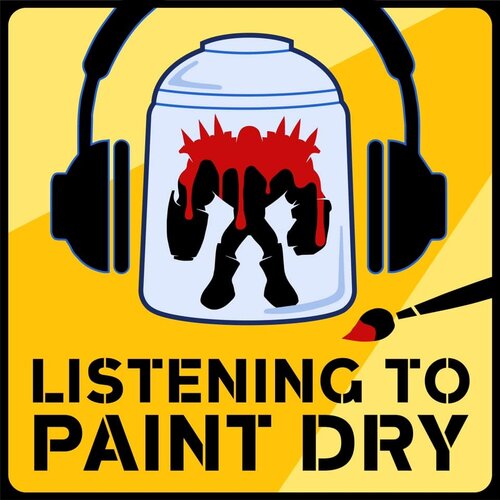
Avante Art - Scale 75 USA
Scale 75 USA is offering a variety of prizes for people who enter their figures in the following categories.
-
Best Scale 75$100.00 Coupon to our web store.
-
Best Smog Rider or Chibi$25.00 Coupon to our web store.
-
Best Fantasy Figure or Bust$25.00 Coupon to our web store.
-
Best Historical Figure or Bust$25.00 Coupon to our web store.
-
Scale75 Junior PainterThe best Scale 75 figure entered by a youth receives a $25.00 coupon to our web store.
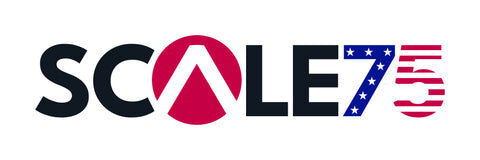
Bombshell Miniatures
Bombshell is sponsoring four different prizes in this year’s competition for Bombshell Miniatures entries. Dog Tags for every artist entering a Bombshell Miniature, and trophies for the top painters of Babes, Counterblast, and Sidekicks and Critterkins.
-
Golden MaeleeGold,Silver, and Copper Maelee awards for the top three Babes, appropriate 75 or busts, Chibis, and misc.
-
CounterblastGold, Silver, and Copper Counterblast awards for the top three Counterblast entries.
-
Doom Bunny AwardsGold, Silver, and Copper Doom Bunny award for the top three Sidekick and Kritterkin entries.
-
Bombshell Dog TagsEach artist entering a Bombshell Miniature is eligible for one a set of Bombshell Dog Tags in Gold, Silver, and Bronze.
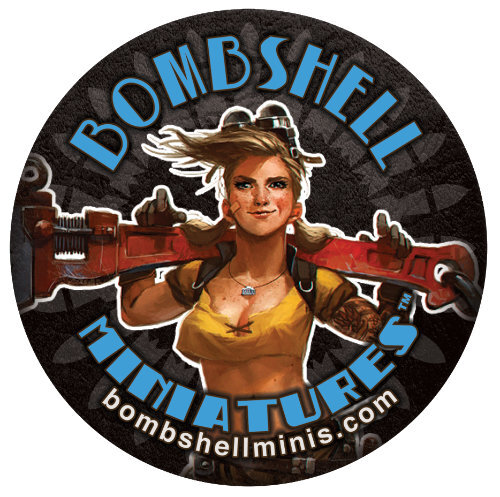
Dark Sword
The Dark Sword Miniatures Manufacturer Awards are open to all painters. To be eligible for our prize categories, the entries must be new entries – never entered into any other painting competitions. In addition, no entries can be commissions from Dark Sword Miniatures for painted studio models. This means Dark Sword studio painters can enter if they so desire, but their entries must be brand new creations not commissioned from Dark Sword and must also adhere to the eligibility requirements above. Dark Sword entries will also get the coveted “double dip” from being part of the overall ReaperCon painting competition as well. So one entry can potentially win multiple prizes/awards!
-
Critter Kingdoms Anthropomorphic AnimalsCan be either a single miniature or a diorama. 1st Place - $150 in Dark Sword Online Store Credit + $100 Cash + Trophy 2nd Place - $100 in Dark Sword Online Store Credit + Trophy 3rd Place - $50 in Dark Sword Online Store Credit + Trophy
-
Diorama1st Place - $150 in Dark Sword Online Store Credit + $100 Cash + Trophy 2nd Place - $100 in Dark Sword Online Store Credit + Trophy 3rd Place - $50 in Dark Sword Online Store Credit + Trophy
-
Dark Sword Single Miniature1st Place - $150 in Dark Sword Online Store Credit + $100 Cash + Trophy 2nd Place - $100 in Dark Sword Online Store Credit + Trophy 3rd Place - $50 in Dark Sword Online Store Credit + Trophy
-
Dark Sword Young PainterFor young painters, aged 17 and younger. Can be either a single miniature or a diorama. $100 in Dark Sword Online Store Credit + Ribbon $75 in Dark Sword Online Store Credit + Ribbon $50 in Dark Sword Online Store Credit + Ribbon

Daedalus Studios
This will be awarded to models that have been purchased from Daedalus’s large selection of 3d printed models. Entrants will need to let registration know if their model was purchased through Daedalus Studios to ensure consideration for these awards.
A trophy and a 100$ gift card to Daedalus Studios for the best entry in each MSP category!
-
PainterSingle Miniature
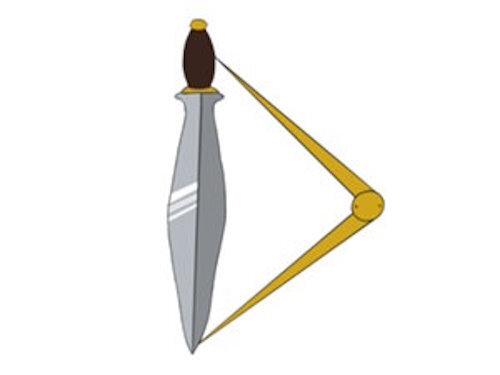
DGS
Awards for DGS models in the Open, Diorama/Vignette, and the Painter Categories.
-
Master Crafter DioramaMaster Crafter Coins for First through Third Places.
-
Master Crafter PaintersMaster Crafter Coins for First through Third Places.
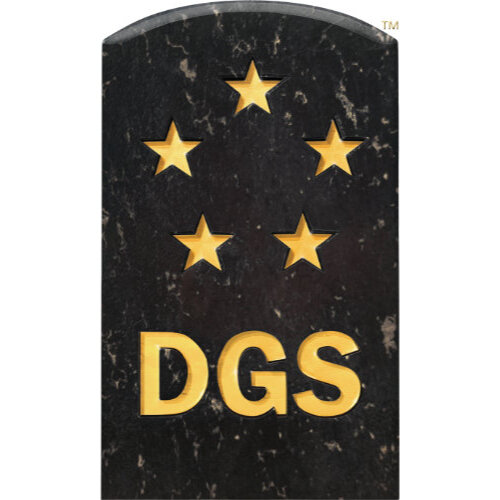
The Golden Maggot
A judge’s choice award sponsored and judged by Jenn “Kwindylarue” Bland and Cara Curley, celebrating entries that toe the line between creepy and cute. While any entry is eligible for the award, entrants that want to make sure their models are considered should let registration staff know. There will be only one first place trophy awarded.
-
The Golden MaggotThere will be only one first place trophy awarded. There is only one The Golden Maggot. There are no The Silver Maggots or The Bronze Maggots.
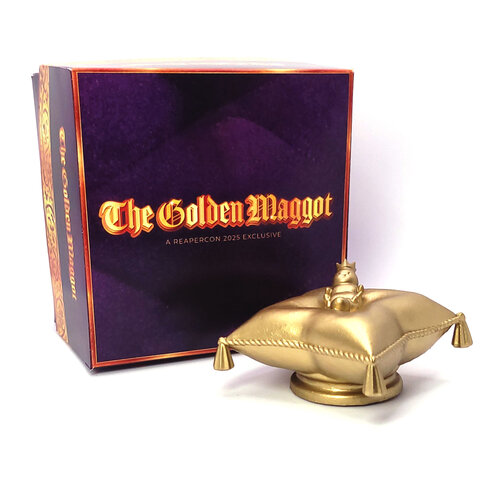
North Texas Figure Club / Avante Art Scale 75
Top winner in each contest category (Painter, Diorama, Open, and Ordnance) for historical model
-
Best Historical Diorama CategoryBest Historical from the Diorama Category
-
Best Historical Painters CategoryBest Historical Model in the Painters Category.
-
Best Historical Open CategoryBest Historical Model in the Open Category
-
Best Historical Ordnance CategoryBest Historical Model in the Ordnance Category
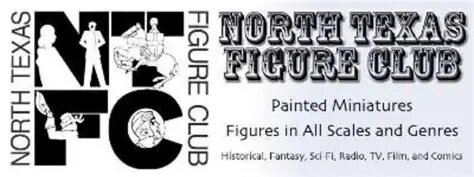
Ignition Core
An award for anime style characters (like our Magical Girl Assault line, or Kingdom Death minis), video game style characters, chibi minis (particularly chibi minis with an anime aesthetic, like our ignition:core line), or minis painted in an animation style (e.g. cell shaded or similarly bold color scheme). These awards are not manufacturer specific.
-
Favorite Anime Style EntryA trophy for First or Second for an Anime, Video Game, or Chibi
-
Favorite Anime Style – YouthA trophy for the youth who enters the best anime-styled entry into the contest.

Kawna Minis
Kawna is providing prizes for their favorite 32mm figures, 72mm figures, and diorama entries, First through Third places. Each winner will get a Kawna Minis Crowphy. In addition, 1st place winners will get their choice of 3 miniatures from the Kawna booth.
-
32mm PainterPrizes for First through Third place.
-
70mm PainterPrizes for First through Third place.
-
Diorama - StorytellerPrizes for First through Third place.

Midknight Heroes
Anyone who enters a chibi in the MSP will receive a free mini from Midknight Heroes while supplies last. We also have special awards for our favorite chibi models entered by Adults and Youths.
-
Chibi AdultGold, Silver, and Bronze level rewards for Adults who enter a chibi figure into the contest.
-
Chibi YouthGold, Silver, and Bronze level rewards for Youths who enter a chibi figure into the contest.

Miniature Monthly
Sometimes we take our little painted army men very seriously, and sometimes that works against us. Afraid to paint that expensive resin? Afraid to mess up that one of a kind sculpt? Yes, we’ve been there too. Let’s have some fun! Did you know that pez dispensers actually make pretty neat busts? It even comes on its own handle!
The zany gang at Miniature Monthly is sponsoring a Manufacturer’s award this year for Best Painted Pez! The prize will be the elusive and highly coveted Golden Pez trophy! Be sure to use the tag #paintapez when posting online!
-
The Golden Pez AwardMiniature Monthly is sponsoring an award for best painted PEZ dispenser. It's cool. It's a whole thing.
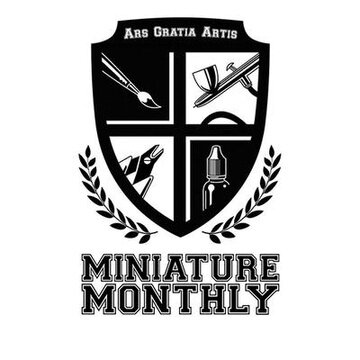
Moonlight Miniatures
-
Lunette Choice AwardA Gold, Silver, or Bronze award for our favorite Moonlight Miniatures entry into the MSP.
-
Moonlight Kid's AwardOur favorite Moonlight Miniature entered by a youth.
-
Moonlight SpotlightAwarded to ANY entry in the MSP Open that we think is super cool or that we feel deserves extra appreciation. This does NOT have to be a Moonlight Minis model. This is not dependent on skill level or any other awards the piece may receive.
-
Lunette Challenge CoinOne will be given to each person entering any Moonlight Minis model in the MSP Open. You do NOT need to win another Moonlight award to receive this.

Texas Wargaming / Galaad
Texas Wargaming is giving out trophies for the best miniatures for Galaad Miniatures and Texas Wargaming figures. We also have a special award for our favorite painted Reaper Miniature.
-
Favorite ReaperThis is a single award for our favorite painted Reaper figure.
-
Best Youth Entry1st, 2nd and 3rd place for favorite Texas Wargaming/Galaad miniature by youth artists
-
Best EntryThis is a first, second, and third place trophy for our favorite Texas Wargaming or Galaad Miniature.
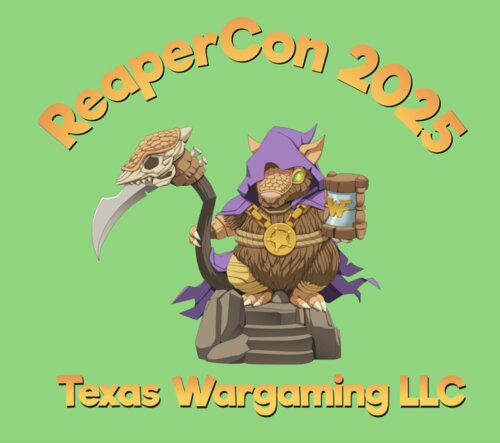
Turbo Dork
We have one of each of our starter sets for the best Metallic paint job in each category!
-
Best Metallic DioramaEach of our starter sets for our favorite metallic paint job in the Diorama category.
-
Best Metallic PaintersEach of our starter sets for our favorite metallic paint job in the Painters category.
-
Best Metallic OpenEach of our starter sets for our favorite metallic paint job in the Open category.
-
Best Metallic OrdnanceEach of our starter sets for our favorite metallic paint job in the Ordnance category.

